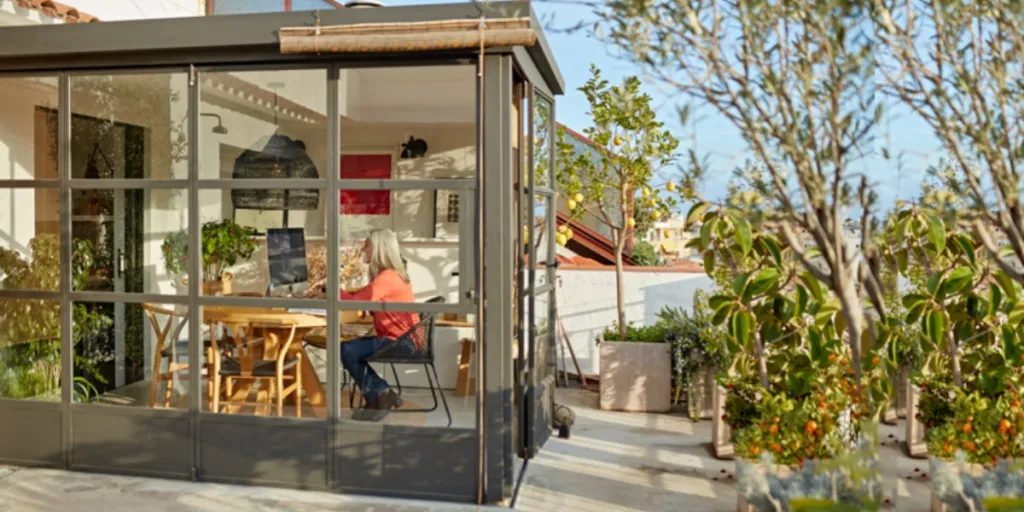Over the last few years, the interior design and home décor industries have witnessed the popularity of architectural solutions that blur the line between indoors and outdoors, enhancing the experience of outdoor spaces while remaining indoors.
From the enclosed patio to floor-to-ceiling windows, homeowners do their best to bring as much natural light as possible into their interior to enjoy all year round. Amongst other solutions, solariums stand out. Unlike a traditional veranda, the solarium is an attached room surrounded by glass walls, allowing complete immersion in nature while maintaining the comfort of a protected, warm environment.
This trend consolidates both in private homes and commercial spaces such as hotels, restaurants, and spas. It represents an opportunity for interior designers, architect studios, and retailers to enrich their inventory. In this article, we will explore the rise of solarium, analyze the market and emerging trends related to this space, and provide some tips for meeting and leveraging the growing demand.
Table of Contents
Origins, trends, and market data for solariums
Hottest solarium trends for retailers
Final thoughts
Origins, trends, and market data for solariums
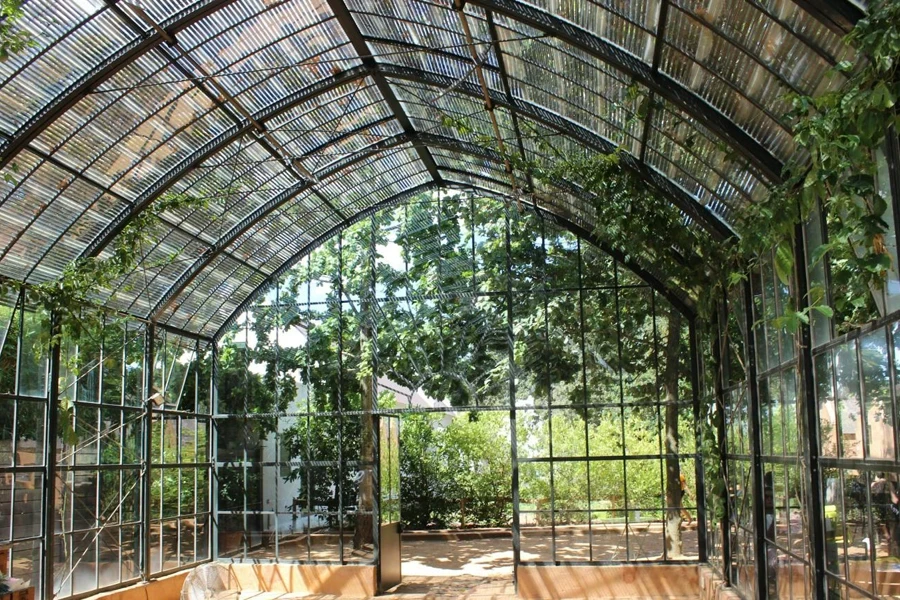
A solarium is an additional sunroom attached to a house to maximize the amount of sunlight, which explains its name. The structure features walls, and sometimes also the roof, made entirely of glass, allowing the occupants to enjoy the beauty of the outside nature, regardless of the weather conditions, and offering a wide view of the garden or the surrounding landscape while remaining protected from the elements and with controlled thermal comfort.
Solariums date back to ancient Roman times when structures called “heliocaminus” were built to capture and gather the sun’s heat during the winter. However, the modern concept of a solarium, as we know it, originated during the 19th century in Europe, where conservatories and greenhouses were very popular among the aristocracy both for aesthetic purposes and for growing exotic plants.
During the 20th century, solariums spread to the United States and Asia. They evolved thanks to new materials such as insulating glass, which allows for a comfortable climate inside while still allowing in large amounts of natural light.
Market data and the reasons behind their success
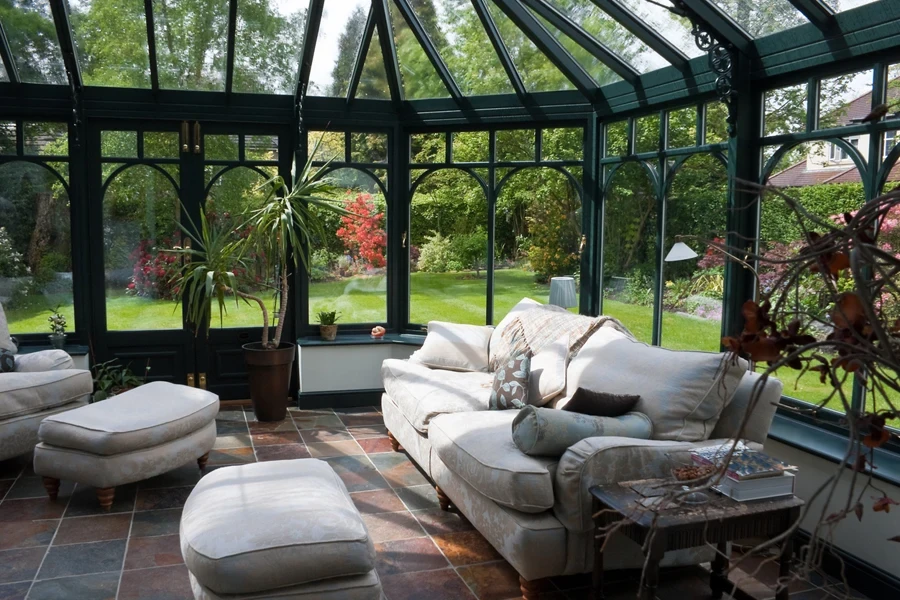
Solariums have always been popular with consumers and have become even more so during the COVID-19 pandemic when people rediscovered their love for nature and their interest in spending time outdoors during segregation and isolation.
Also, these rooms are multifunctional as they can serve as living rooms, dining rooms, relaxation areas, offices, or even winter gardens to accommodate plants and flowers. They can also boost the value of properties and bring health benefits to the inhabitants: improve mood, boost productivity, and even increase vitamin D levels with the right type of glass.
So, it comes with no surprise that, according to a study by Business Research Insights, the global market for solariums and glass structures for residential and commercial use will grow steadily from USD 325 million in 2022 to USD 596.47 million by 2031, with a compound annual growth rate (CAGR) of 5.81% from 2022 to 2031.
Hottest solarium trends for retailers
Online and offline retailers, architects, interior design studios, and even housing developers can benefit greatly from the growing interest in solariums and glass structures. Offering solutions for constructing, fitting, and furnishing solariums is a great idea to target an ever-increasing demand and offer accessories and complements that enrich the customer experience.
Prefabricated solariums
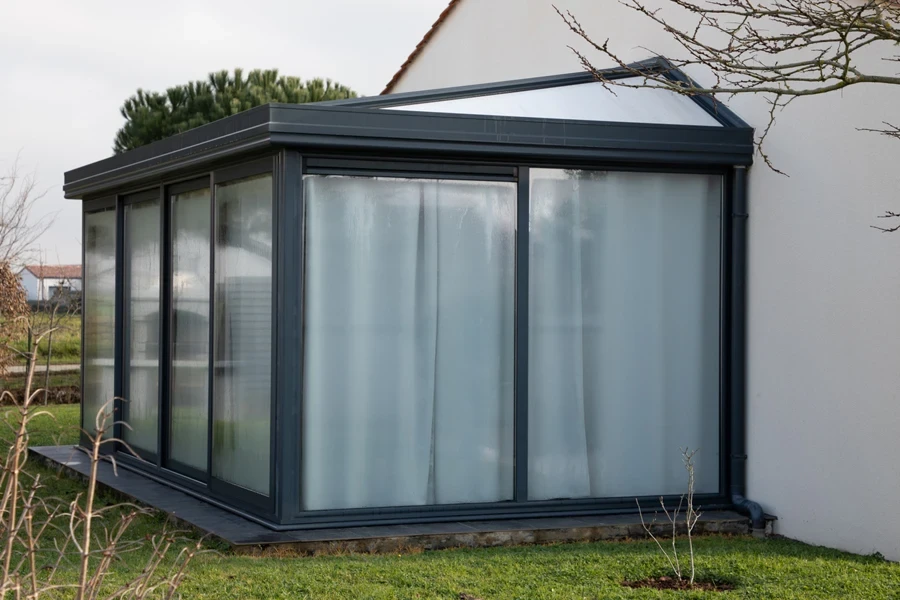
Prefabricated solariums are a practical and relatively economical solution for those who want to arrange a home addition on a budget without undertaking a complex renovation. Consumers can purchase these modules in kit form and install them quickly. They often come with a glass roof, wall, and a sturdy metal or plastic structure.
These enclosures are easy to assemble and require less technical expertise than custom-made solariums, making them more accessible to many customers. They are easy to deliver and stock, offering rapid delivery times.
Custom solariums

On the other hand, customers looking for a unique design or a custom-made architectural feature that perfectly integrates with the existing home will likely go for a custom solarium.
Custom-made solariums can be whatever the clients want; they can become a full-fledged living space with heating systems, doors, and furnishing, or store tropical plants and flowers adapting to specific aesthetic and functional needs.
Of course, this solution is time-consuming and more expensive than the previous options, but it offers professionals higher margins as it’s perceived as a high-end product.
Glass and insulation
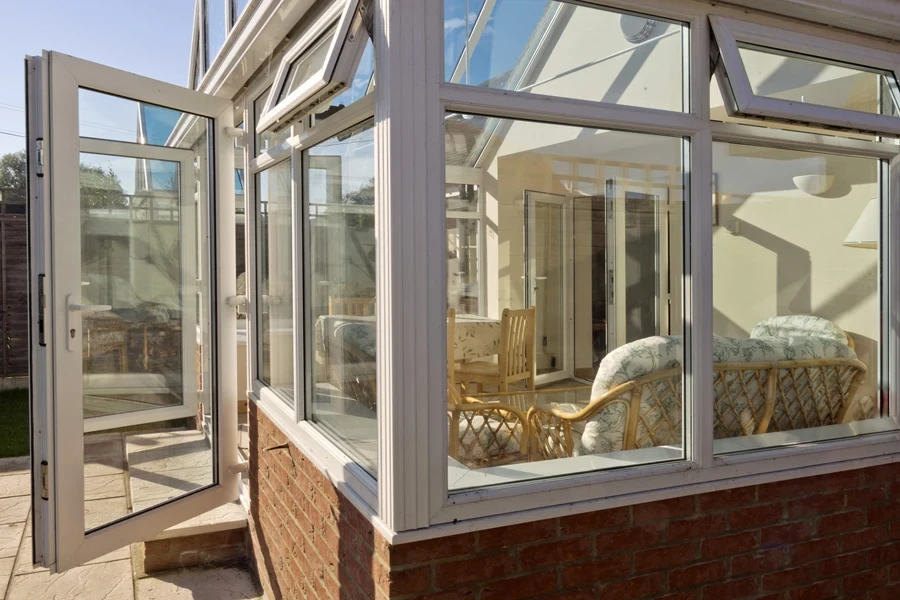
One of the key elements of a solarium is the thermal insulating glass, which allows homeowners to enjoy natural light while maintaining a comfortable internal temperature in all seasons. Offering different options for high-energy performance glass is essential for retailers who want to meet the needs of consumers more attentive to energy efficiency.
Large windows and side doors can protect from ultraviolet light and allow for ventilation during the day and night. A fixed glass structure offers a sleeker design but requires the installation of air conditioning in summer.
Furnishing and accessories
Accessories are an important part of the solarium experience. Offering furnishing accessories such as light control curtains, sofas, lounger sets, ventilation systems, or integrated heating allows retailers to increase the average value of each sale.
Home automation solutions for solariums
With the increasing integration of home automation in modern homes, intelligent control systems for solariums, terraces, and porches are also becoming increasingly popular.
These systems allow for automatic light intensity, internal temperature, and ventilation adjustment, ensuring optimal comfort. Offering advanced technological solutions attracts a young and innovative clientele, and they can be presented as an additional option, increasing the overall value of the solarium.
Final thoughts
Solariums represent a unique opportunity for home professionals who wish to enrich their offer with innovative solutions that can improve living and commercial spaces. The growing demand for bright, sustainable, and aesthetically pleasing solariums allows retailers to propose a wide range of products, from prefabricated solariums to custom-made ones, including furnishing accessories and advanced technologies for environmental control.
With the market expanding and the focus increasingly on energy efficiency and well-being, investing in the solarium sector can bring significant commercial benefits in the medium and long term.
